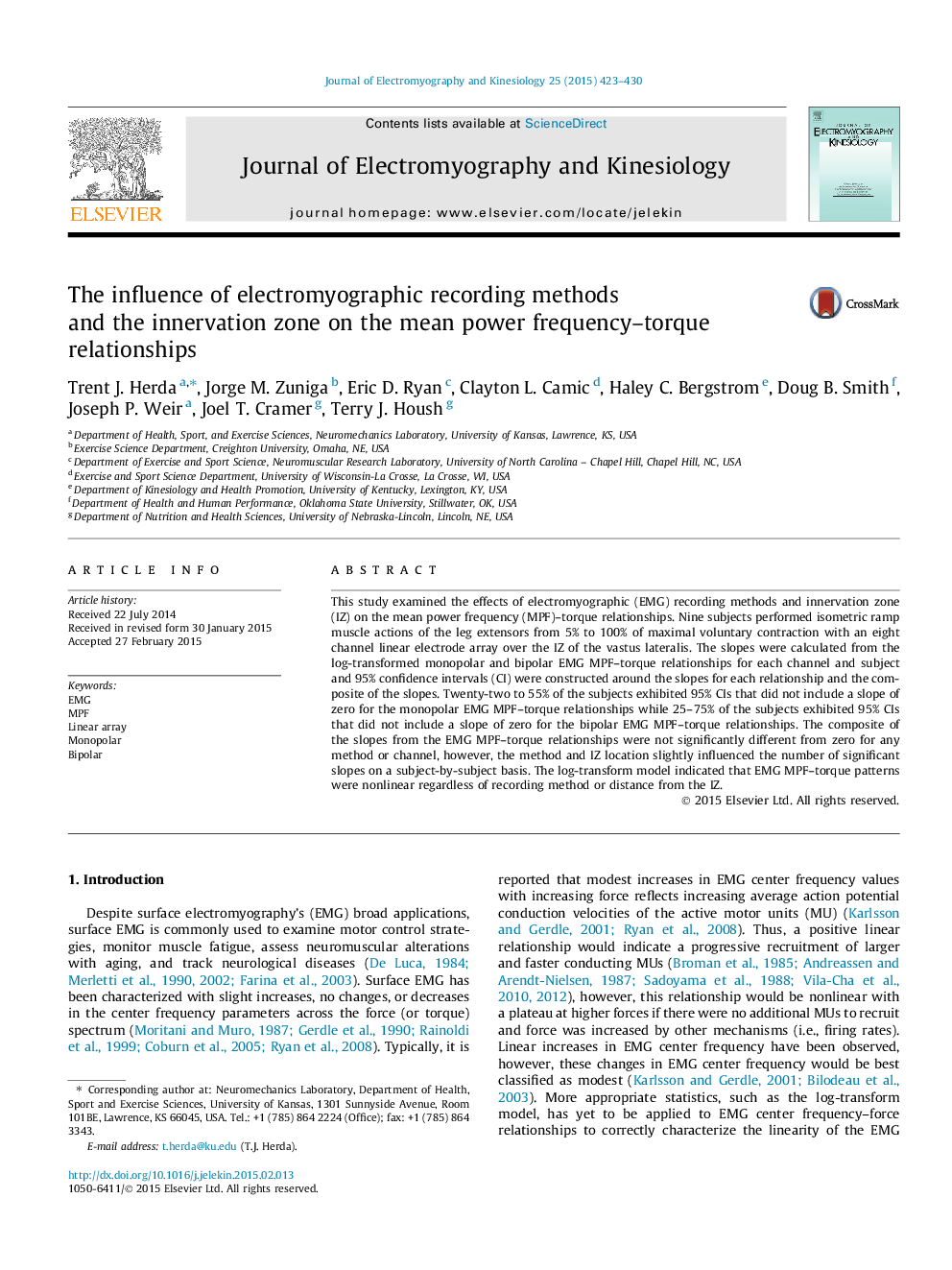| Article ID | Journal | Published Year | Pages | File Type |
|---|---|---|---|---|
| 6210282 | Journal of Electromyography and Kinesiology | 2015 | 8 Pages |
This study examined the effects of electromyographic (EMG) recording methods and innervation zone (IZ) on the mean power frequency (MPF)-torque relationships. Nine subjects performed isometric ramp muscle actions of the leg extensors from 5% to 100% of maximal voluntary contraction with an eight channel linear electrode array over the IZ of the vastus lateralis. The slopes were calculated from the log-transformed monopolar and bipolar EMG MPF-torque relationships for each channel and subject and 95% confidence intervals (CI) were constructed around the slopes for each relationship and the composite of the slopes. Twenty-two to 55% of the subjects exhibited 95% CIs that did not include a slope of zero for the monopolar EMG MPF-torque relationships while 25-75% of the subjects exhibited 95% CIs that did not include a slope of zero for the bipolar EMG MPF-torque relationships. The composite of the slopes from the EMG MPF-torque relationships were not significantly different from zero for any method or channel, however, the method and IZ location slightly influenced the number of significant slopes on a subject-by-subject basis. The log-transform model indicated that EMG MPF-torque patterns were nonlinear regardless of recording method or distance from the IZ.
